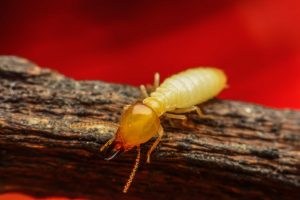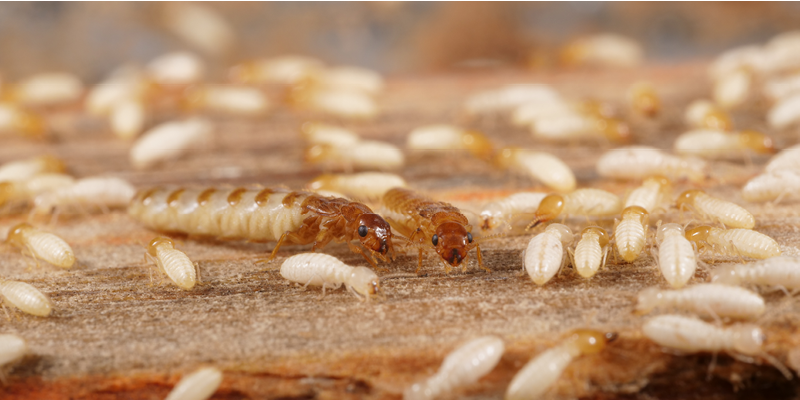Termite Breeding Habits: A Detailed Overview
Termites are known for their complex social structures and impactful presence in ecosystems. Understanding their breeding habits is crucial for managing infestations and appreciating their ecological roles. This article provides an in-depth look into the breeding habits of termites, including their lifecycle, mating behaviors, and environmental influences.
The Lifecycle of Termites
The lifecycle of termites is a multifaceted process that includes several distinct stages. Each stage plays a critical role in the development and expansion of termite colonies. Here’s an overview of the termite lifecycle and how it influences breeding habits.
Egg Stage
The lifecycle of termites begins with the egg stage. The queen termite, the primary reproductive in a colony, lays thousands of eggs during her lifetime. These eggs are carefully tended by worker termites, which maintain optimal conditions for incubation. The egg stage is crucial as it sets the foundation for the development of the colony.
Eggs typically hatch into nymphs after a few weeks or months, depending on the species and environmental conditions. The nurturing environment provided by worker termites ensures that the eggs develop into healthy nymphs, which are the next stage in the lifecycle.
Nymph Stage
Once the eggs hatch, they become nymphs, which are immature termites. Nymphs undergo several molts as they grow and differentiate into various castes within the colony. During this stage, nymphs develop into workers, soldiers, or alates, depending on environmental cues and colony needs.

Nymphs that develop into workers are responsible for maintaining the nest, foraging for food, and caring for the young. Soldier nymphs become defenders of the colony, while alates are the winged reproductive termites that will eventually leave the colony to establish new ones.
Reproductive Stage
The reproductive stage is characterized by the emergence of alates, the winged reproductive termites. Alates are crucial for colony expansion and are responsible for mating and founding new colonies. They emerge in large swarms during specific times of the year, typically after rainfall, to maximize their chances of finding a mate and establishing a new colony.
After mating, alates shed their wings and become the new king and queen of a fledgling colony. This stage marks the beginning of a new lifecycle as the queen starts laying eggs and the colony begins to grow.
Mating Behaviors of Termites
Mating behaviors in termites are intricate and essential for the continuation of the species. These behaviors are influenced by various factors, including environmental conditions and the presence of other termite colonies. Here’s a closer look at termite mating behaviors.
Swarming
Swarming is a critical behavior in termite reproduction. During swarming, alates leave their parent colonies in large numbers to find mates and establish new colonies. This event typically occurs during warm, humid conditions following rainfall, which provides the ideal environment for alates to fly and mate.
Swarming is often a synchronized event where termites from different colonies converge, increasing the likelihood of successful mating between individuals from different genetic backgrounds. This genetic diversity is vital for the health and adaptability of new colonies.
Mating Rituals
During the nuptial flight, alates engage in mating rituals mid-air. After finding a suitable mate, the pair lands and begins the process of establishing a new colony. The male and female termites then shed their wings and enter a suitable nesting site where the queen starts laying eggs.
The mating rituals of termites are designed to ensure that only the most viable pairs establish new colonies. This process includes a selection of mating partners based on specific traits, which contributes to the overall genetic health of the population.
Colony Establishment
Once a mating pair has landed and chosen a nesting site, they begin the establishment of a new colony. The queen starts laying eggs, which are incubated and cared for by the king and worker termites. The initial stages of colony establishment are critical as they determine the colony’s future growth and success.
The new colony gradually grows as more eggs hatch into nymphs, and the colony develops its various castes. The presence of workers, soldiers, and reproductive termites ensures that the colony can function efficiently and expand over time.
Environmental Factors Influencing Termite Breeding
Environmental factors play a significant role in termite breeding habits. Understanding these factors can help in managing termite populations and preventing infestations. Here’s a look at the key environmental influences on termite breeding.
Temperature and Humidity
Temperature and humidity are crucial factors affecting termite breeding. Termites thrive in warm, moist environments, which provide ideal conditions for egg incubation and nymph development. High humidity levels are particularly important for maintaining the health of the eggs and nymphs.
Fluctuations in temperature and humidity can impact termite breeding success. Extreme temperatures or dry conditions can hinder the reproductive process and affect the overall health of the colony. Pest control measures often include monitoring and managing environmental conditions to reduce the attractiveness of areas to termites.
Food Availability
The availability of food sources, such as wood and other cellulose materials, directly impacts termite breeding. A plentiful food supply supports a larger workforce, which allows the queen to produce more eggs and sustain the colony’s growth.
Effective pest management involves reducing access to potential food sources for termites. This includes proper maintenance of wooden structures and eliminating moisture sources that can attract termites.
Colony Density and Competition
Colony density and competition with other termite colonies also influence breeding behaviors. In areas with high termite populations, colonies may produce more alates to increase their chances of finding mates and establishing new colonies.
Managing termite populations involves addressing issues related to colony density and competition. This may include targeted pest control strategies to reduce the number of active colonies and minimize the spread of infestations.
Conclusion
Termite breeding habits are complex and essential for the survival and expansion of their colonies. From the lifecycle stages to mating behaviors and environmental influences, understanding these habits provides valuable insights into managing and controlling termite populations. By addressing the factors that affect termite reproduction, homeowners and pest control professionals can implement more effective strategies to prevent and manage termite infestations.


